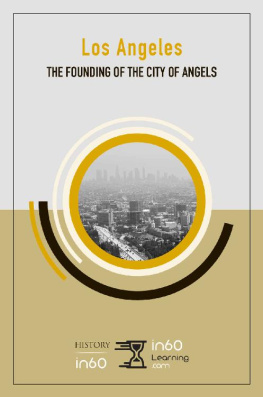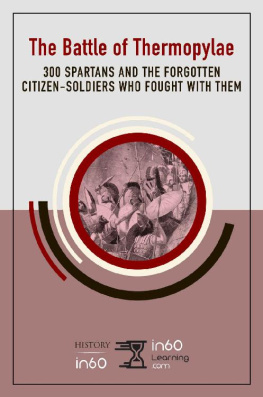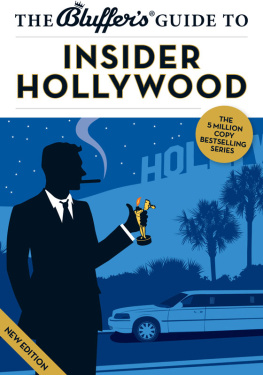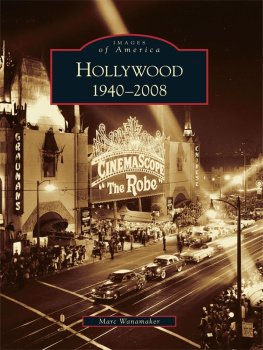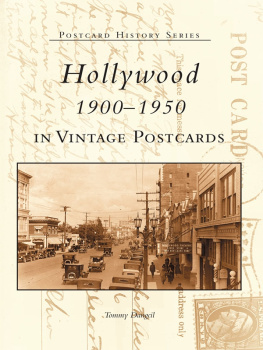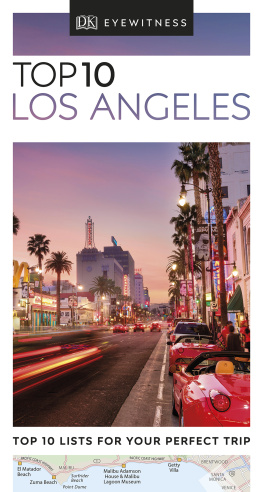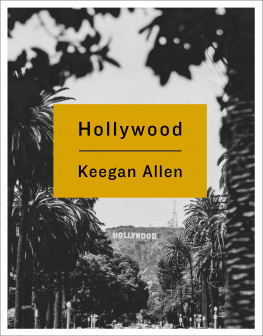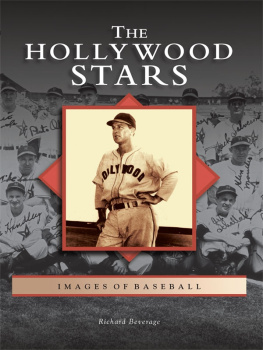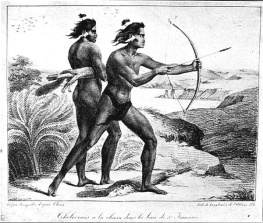in60Learning - The Founding of Los Angeles: Before the Birth of Hollywood
Here you can read online in60Learning - The Founding of Los Angeles: Before the Birth of Hollywood full text of the book (entire story) in english for free. Download pdf and epub, get meaning, cover and reviews about this ebook. year: 2018, publisher: in60Learning, genre: Home and family. Description of the work, (preface) as well as reviews are available. Best literature library LitArk.com created for fans of good reading and offers a wide selection of genres:
Romance novel
Science fiction
Adventure
Detective
Science
History
Home and family
Prose
Art
Politics
Computer
Non-fiction
Religion
Business
Children
Humor
Choose a favorite category and find really read worthwhile books. Enjoy immersion in the world of imagination, feel the emotions of the characters or learn something new for yourself, make an fascinating discovery.
- Book:The Founding of Los Angeles: Before the Birth of Hollywood
- Author:
- Publisher:in60Learning
- Genre:
- Year:2018
- Rating:4 / 5
- Favourites:Add to favourites
- Your mark:
- 80
- 1
- 2
- 3
- 4
- 5
The Founding of Los Angeles: Before the Birth of Hollywood: summary, description and annotation
We offer to read an annotation, description, summary or preface (depends on what the author of the book "The Founding of Los Angeles: Before the Birth of Hollywood" wrote himself). If you haven't found the necessary information about the book — write in the comments, we will try to find it.
in60Learning: author's other books
Who wrote The Founding of Los Angeles: Before the Birth of Hollywood? Find out the surname, the name of the author of the book and a list of all author's works by series.
The Founding of Los Angeles: Before the Birth of Hollywood — read online for free the complete book (whole text) full work
Below is the text of the book, divided by pages. System saving the place of the last page read, allows you to conveniently read the book "The Founding of Los Angeles: Before the Birth of Hollywood" online for free, without having to search again every time where you left off. Put a bookmark, and you can go to the page where you finished reading at any time.
Font size:
Interval:
Bookmark:
The Founding of Los Angeles
Before the Birth of Hollywood
In60Learning
Copyright 2018 in60Learning
All rights reserved.
ISBN:
ISBN-13:
CONTENTS
Introduction | i | |
The Tongva | Pg 1 | |
Early Exploration | Pg 5 | |
Spanish Conquest | Pg 8 | |
Pobladores | Pg 11 | |
Mexican Takeover | Pg 15 | |
American Transition | Pg 19 | |
Hollywood and Beyond | Pg 23 |

Introduction
Los Angeles may be best-known as the home of Hollywood glamour, but it had a rich history long before the first movie was ever made. There's evidence that Native Americans had lived there for thousands of years before the Spanish conquest, which then saw the development of missions throughout California.
After 44 "Pobladores" traveled to what we now know as downtown Los Angeles and started to build housing there, the Mexicans took over and the area eventually went on to become part of the United States.
With the California Gold Rush, the sunny climate and so much potential in various industries, it wasn't long before people saw the city's promise. It quickly started to become the thriving area that we now know and celebrate as the "City of Angels."
1 The Tongva
Tip the world over on its side and everything loose will land in Los Angeles.
-Frank Lloyd Wright
Los Angeles was founded in 1781, four years following Felipe de Neve's tour of Alta California. But the land had already been inhabited for thousands of years by Native Americans. The Chumash people, who still exist in much smaller numbers today, historically occupied portions of California counties including Los Angeles, Santa Barbara, Ventura and San Luis Obispo, extending from Malibu to Morro Bay around 8000 B.C. During the Millingstone Horizon, which is also known as the Milling Stone Period, the central area of Los Angeles was apparently populated by Hokan-speaking people. They gathered wild seeds, fished and hunted sea mammals and were known for grinding food with stone tools. The area that is now San Fernando was inhabited by the Tataviam circa 300 B.C.
It is not known for exactly what reason, but the Hokan-speaking people left the area of Los Angeles and migrants settled there in their place, or absorbed them as part of their settlements. There are theories that many of them could have fled because of the drought in the Great Basin, the most extensive area of connecting drainage basins in North America. The migrants who occupied the Los Angeles region were known as the Tongva, which is also the name of the Uto-Aztecan language that they spoke. By 500 A.D., the Hokan-speakers had been entirely pushed out or became a part of the Tongva tribe.
Discoveries about the Native Americans living in California and their history are still being unearthed to this day and prove that indigenous people inhabited Los Angeles County for thousands of years. A site formerly occupied by the Chowigna (part of the Tongva) has evidence of Native Americans living there over 7,000 years ago, according to an excavation of the Palos Verdes area in the 1930s. And as recently as 2006, a prehistoric milling site at the base of the San Gabriel Mountains near Azusa was found and is said to have been established 8,000 years earlier. Then in 2007 and 2008, archaeologists dug up over 174 ancient American Indian remains in Huntington Beach on land once shared by the Tongva and Acjachemem tribes.
There is no evidence of a native Tongva speaker in the last 150 years and the last native speakers are believed to have lived in the early 20th century. Although there are reports of Tongva speakers who were alive as recently as the 1970s, the language became extinct with the decline of the tribe and their culture.
In their dialect, the Tongva people called Los Angeles Yaa. And despite the fact that it has been such a long time since the language died out, many of the words remain an essential part of Los Angeles and its surrounding areas, especially as far as the toponymy of the city is concerned. Place names such as Azusa, Cahuenga, Cucamonga (as in Rancho Cucamonga), Pacoima, Topanga and Tujunga all originate back to the Tongva language and its use following the arrival of the Spanish. The minor planet of 5000 Quaoar, in the Kuiper belt, is also named after Quaoar, who was the Tongva creator God. Also, there is a summit named Tongva Peak in Glendale's Verdugo Mountains, the Tongva Park in Santa Monica and The Gabrielino Trail in the Angeles National Forest.
The Tongva were indoctrinated following the arrival of European colonists in the late eighteenth century, and despite the fact that they existed in large numbers, we don't know too much about their ancient traditions. They worshipped Quaoar, who was also called "Chinigchinix," and created Weywot, god of the sky. Legend says that Weywot was a mean God who had rule over the Tongva people and was killed by his sons because of his cruel nature. Quaoar then appeared to the Tongva in the form of a ghostly figure and gave laws to his followers. He decided which groups would be the political and spiritual leaders of the Tongva. Their God brought order to the world, and they had a unique circular structure in the village where religious ceremonies took place. Only female singers and males of high-status could enter, as well as close relatives during funerals. They did not believe in hell or evil spirits until Spanish colonists introduced this idea through the establishment of their missions.
The Tongva were known story-tellers, and sharing fairy tales and legends was a significant way that they communicated with each other. Folklore was also how they passed down their beliefs to their children, while teaching them lessons and their customs at the same time. They explained nature through stories and had a compelling tale about what caused earthquakes. The Tongva said that the world was built on the backs of seven giant turtles, which stayed still and kept the land motionless when they were content. But they moved in different directions when they argued or were unhappy, and this caused the ground to shake and split apart on their backs, resulting in earthquakes.
They made the most of the nature that surrounded them, including the coast and the Los Angeles, San Gabriel and Santa Ana Rivers. The river provided them with fresh water, as well as fish, which the men were responsible for catching. Deer, rabbits and other small game they hunted were also a food source for their families. They never killed owls or porpoises because they had great respect for them. They used nets and harpoons for fishing, and hunted with throwing sticks and bows and arrows, or sometimes built traps out of wood. Bows and arrows were also used by warriors, along with clubs, although the Tongva rarely engaged in warfare. However, they valued courage above almost anything else and men regularly went to extremes to demonstrate that they possessed this, such as lying on top of red anthills with ants placed on their faces. Boys had to go through endurance tests to become men.
The women were also significant contributors to the table and were the ones who gathered fruits, seeds, acorns and beans. They even baked bread made from acorn flour that they specially prepared, or from corn they obtained through trading between the Tongva and surrounding tribes. They were additionally skilled craftspeople and known for weaving baskets and for carving soapstone.
Next pageFont size:
Interval:
Bookmark:
Similar books «The Founding of Los Angeles: Before the Birth of Hollywood»
Look at similar books to The Founding of Los Angeles: Before the Birth of Hollywood. We have selected literature similar in name and meaning in the hope of providing readers with more options to find new, interesting, not yet read works.
Discussion, reviews of the book The Founding of Los Angeles: Before the Birth of Hollywood and just readers' own opinions. Leave your comments, write what you think about the work, its meaning or the main characters. Specify what exactly you liked and what you didn't like, and why you think so.

